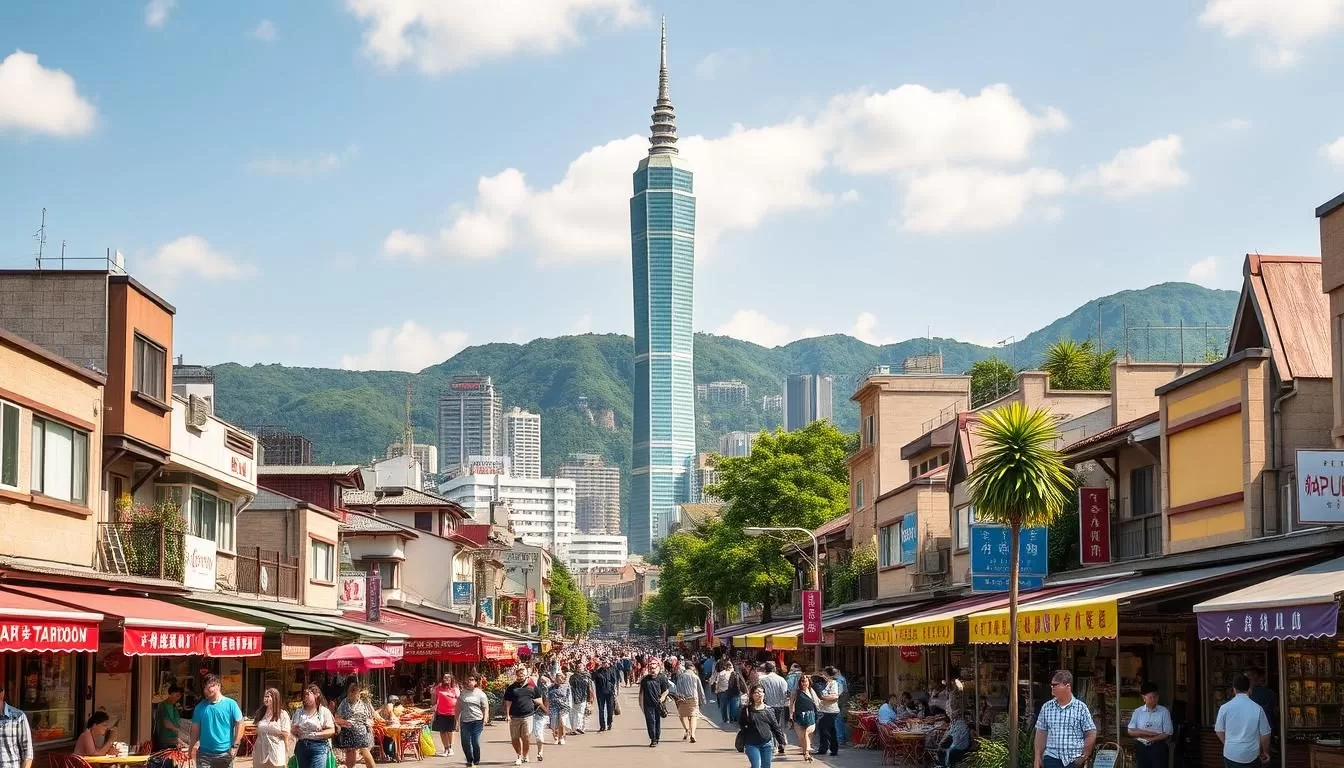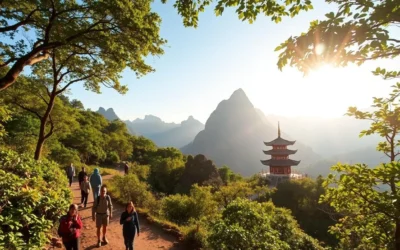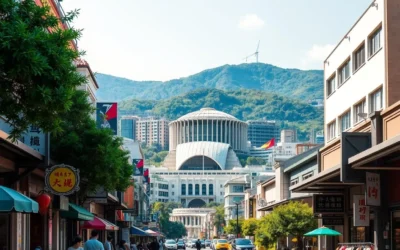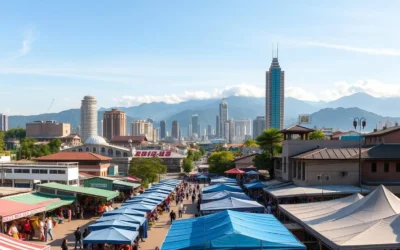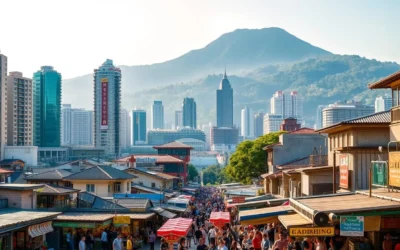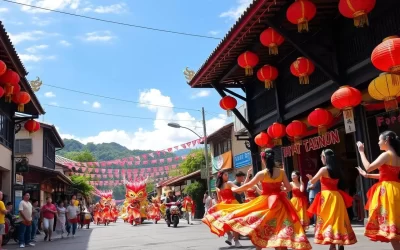✓ Accommodations✓ Flights✓ Rental Cars✓ Tours & Activities
Planning your trip around the weather can make all the difference. Understanding the climate and seasonal changes helps you choose the perfect time to visit. Whether you prefer mild temperatures or vibrant natural events, timing is key.
In this city, temperatures range from a chilly 50°F in winter to a warm 90°F in summer. The subtropical climate brings distinct regional variations, making each season unique. For instance, the southern areas experience tropical weather, with summer highs reaching 97°F.
Rainfall also plays a role, with an average of 95 inches annually. September sees the highest rainfall, making it less ideal for outdoor activities. On the other hand, spring and autumn offer pleasant conditions, with temperatures averaging 73°F and 75°F, respectively.
By aligning your travel plans with the weather, you can enjoy the city’s beauty without the hassle of extreme conditions. Let’s dive deeper into what each month has to offer.
Understanding Taipei’s Climate and Weather Patterns
Exploring the city’s climate can help you plan a more enjoyable trip. The region’s subtropical conditions create distinct seasonal shifts, each offering unique experiences. From mild winters to hot summers, the weather plays a significant role in shaping your travel itinerary.
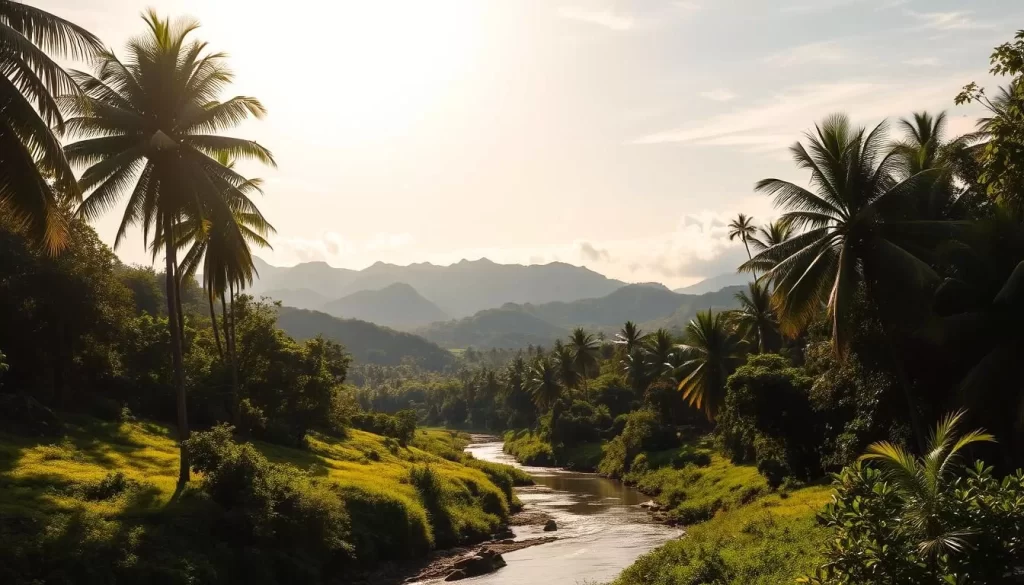
Subtropical Conditions and Seasonal Shifts
The city’s subtropical climate ensures evergreen forests and temperate highlands. Winters are cooler, with average lows of 14°C (57°F) in January and February. Summers, on the other hand, can get quite warm, with highs reaching 33°C (91°F) in July.
Rainfall varies throughout the year, with August being the wettest month, receiving up to 270 mm of rain. Spring and autumn offer more balanced conditions, making them ideal for outdoor activities.
Regional Weather Variability
Weather patterns differ significantly between the north and south. The northern areas experience increased rainfall during winter, while the south remains drier and hotter. This regional variability means your activities can change depending on where you are.
For example, while the north might be perfect for exploring lush forests, the south offers sunny beaches. Understanding these differences ensures you pack appropriately and plan activities that suit the local weather.
As the saying goes,
“Knowing the weather is half the battle in travel planning.”
Whether you’re hiking in the mountains or strolling through the city, being prepared for the climate enhances your experience.
Taipei, Taiwan: Best Months for a Weather-Savvy Trip
Choosing the right time to explore this vibrant destination ensures a memorable experience. The optimal months typically feature milder weather and lower rainfall, making them ideal for outdoor activities and sightseeing.
From October to April, average temperatures range from 60°F to 80°F, creating comfortable conditions for exploration. Rainfall is significantly lower during these months, reducing the chances of disruptions to your plans.
Traveling during this period is highly recommended. Whether you’re hiking in the mountains or strolling through the city, the weather enhances your experience. Each season offers unique opportunities, from autumn’s pleasant temperatures to spring’s vibrant blossoms.
Here’s a quick overview of the key advantages during these months:
| Month | Average Temperature | Rainfall |
|---|---|---|
| October | 73°F | Low |
| November | 68°F | Low |
| December | 63°F | Moderate |
| January | 60°F | Moderate |
| February | 62°F | Low |
| March | 67°F | Low |
| April | 73°F | Low |
By aligning your trip with these favorable conditions, you can make the most of your time in this stunning area. Whether you’re exploring national parks or enjoying local festivals, the weather plays a key role in your experience.
Winter Wonders in Taipei and Northern Taiwan
Winter in this region brings a unique charm, blending chilly weather with cultural celebrations. From December to February, temperatures range from 55°F to 64°F, making it the perfect time to enjoy indoor attractions and natural hot springs.
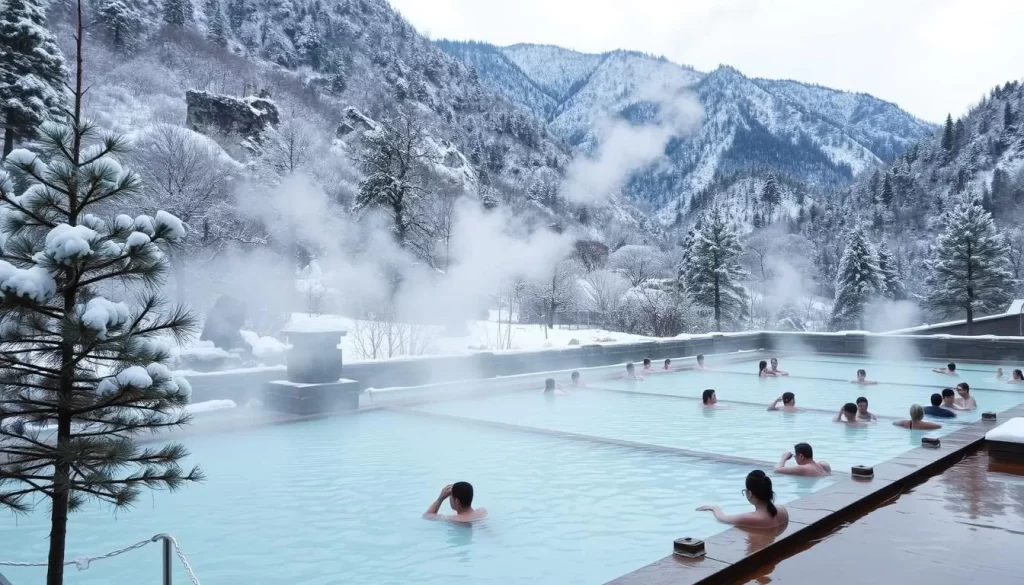
Embracing Cold Weather & Hot Springs
The cooler months are ideal for visiting therapeutic hot springs. Locations like Beitou and Wulai are famous for their natural geothermal pools. These spots offer a relaxing escape from the crisp winter air.
Rainfall during this season is moderate, ensuring you can enjoy outdoor activities without much disruption. Whether you’re soaking in a hot spring or exploring the scenic landscapes, winter provides a serene and rejuvenating experience.
Festivals: Chinese New Year and Lantern Celebrations
Winter is also a time for vibrant cultural events. The Chinese New Year, celebrated in January or February, is the highlight of the season. Streets come alive with colorful decorations, traditional performances, and festive markets.
Another must-see event is the Lantern Festival, which marks the end of the New Year celebrations. Thousands of lanterns light up the night sky, creating a magical atmosphere. These events offer a glimpse into the rich cultural heritage of the region.
Here’s a quick overview of winter weather and activities:
| Month | Average Temperature | Rainfall | Key Events |
|---|---|---|---|
| December | 63°F | Moderate | Festival Preparations |
| January | 60°F | Moderate | Chinese New Year |
| February | 62°F | Low | Lantern Festival |
Traveling during winter offers a unique blend of relaxation and cultural immersion. With fewer crowds and pleasant weather, it’s the perfect time to explore this enchanting region.
Springtime Delights and Cherry Blossom Viewing
Spring brings a refreshing change, transforming the landscape into a colorful paradise. As the chill of winter fades, the region awakens with vibrant blooms and pleasant weather. This season is the best time to explore the outdoors, with average daytime temperatures around 73°F.
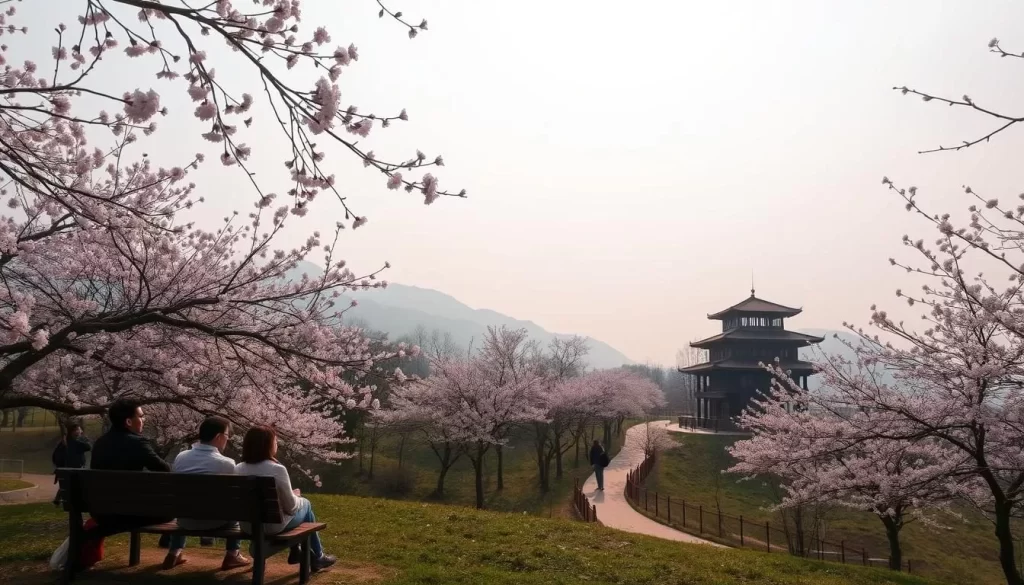
Seasonal Transition and Outdoor Activities
The transition from winter to spring offers a perfect balance of warmth and natural beauty. With moderate temperatures and lower humidity, it’s an ideal time for hiking, cycling, and other outdoor pursuits. The weather is neither too hot nor too cold, making it comfortable for long days of exploration.
Rainfall is minimal during this season, ensuring fewer disruptions to your plans. Whether you’re strolling through parks or visiting cultural sites, the mild conditions enhance your experience. Spring also marks the beginning of the cherry blossom season, a highlight of the year.
Recommended Spots for Cherry Blossoms
The cherry blossom season typically runs from late January to April, painting the region in shades of pink and white. One of the most popular spots is Yangmingshan National Park, where thousands of cherry trees create a breathtaking sight. Local temples and gardens also offer stunning views of these delicate flowers.
Here are some top locations to enjoy cherry blossoms:
- Yangmingshan National Park: Known for its vast cherry tree groves and scenic trails.
- Local Temples: Many temples feature cherry trees, blending natural beauty with cultural heritage.
- City Parks: Perfect for a leisurely stroll amidst blooming flowers.
Spring’s moderate temperature and vibrant scenery make it the best time visit for nature lovers and photographers alike. Plan your trip during this season to witness the region’s most enchanting displays.
Summer Adventures: Beating the Heat and Humidity
Summer in this vibrant destination brings both challenges and opportunities for travelers. With temperatures often exceeding 30°C (86°F) and humidity levels reaching 75-80%, the weather can feel intense. However, this season also offers lively festivals, water-based fun, and a chance to explore the region’s natural beauty.

Typhoon Season Awareness and Rainfall Tips
From July to October, the region enters typhoon season, bringing heavy rain and strong winds. To stay safe, monitor weather forecasts and plan indoor activities during storms. Pack lightweight rain gear and waterproof shoes to handle sudden downpours. Staying informed ensures you can adapt your plans and enjoy your trip despite the rain.
Beach Escapes and Water-Based Fun
Beaches and water parks become major attractions during summer. Popular spots like Fulong Beach offer a refreshing escape from the heat. Water sports such as kayaking and paddleboarding are also great ways to stay active while cooling off. Don’t forget to stay hydrated and apply sunscreen to protect yourself from the sun’s rays.
Here’s a quick guide to summer conditions and activities:
| Month | Average Temperature | Key Activities |
|---|---|---|
| June | 30°C (86°F) | Beach outings, early summer festivals |
| July | 35°C (95°F) | Water parks, indoor cultural events |
| August | 35°C (95°F) | Typhoon safety, local markets |
Despite the heat, summer is a best time to experience the region’s vibrant energy. Whether you’re relaxing on the beach or exploring local festivals, planning ahead ensures a memorable trip. For more tips on making the most of your visit, check out this guide.
Autumn Tranquility: Pleasant Temperatures and Festivals
Autumn brings a perfect blend of mild weather and cultural richness to the region. With average temperatures around 75°F and lower humidity, this season is ideal for outdoor adventures and cultural exploration. Whether you’re hiking through scenic trails or attending vibrant festivals, autumn offers a serene yet exciting experience.
Hiking Trails and Cultural Highlights
October and November are the best months for hiking, thanks to the comfortable weather and minimal rainfall. Nearby national parks and scenic areas provide breathtaking views of autumn foliage. Trails like Yangmingshan are particularly popular, offering a mix of natural beauty and accessibility.
Cultural events also shine during this season. The Puppet Arts Festival is a highlight, showcasing traditional and contemporary performances. Street food markets come alive, offering a taste of local flavors. These events add a unique charm to your autumn holiday.
Here’s a quick guide to autumn conditions and activities:
| Month | Average Temperature | Key Activities |
|---|---|---|
| October | 73°F | Hiking, Puppet Arts Festival |
| November | 68°F | Foliage viewing, street food markets |
Autumn’s moderate weather and cultural vibrancy make it one of the best times to explore the region. For more insights on planning your trip, check out this guide on the best times to visit Tokyo.
Regional Variations: Exploring Beyond Taipei
Venturing beyond the city reveals a world of diverse climates and stunning landscapes. Each region offers unique experiences, from tropical beaches in the south to serene mountain retreats. Understanding these variations helps you tailor your trip to match your interests.
Southern Regions and Tropical Climates
The southern part of the island boasts a tropical climate, with warm temperatures year-round. Cities like Kaohsiung are perfect for beach lovers, offering sunny days and vibrant night markets. Summer here can be hot, with temperatures often exceeding 30°C (86°F).
Rainfall is more frequent during the typhoon season, which runs from July to October. Despite the occasional downpour, the south remains a popular destination for its lively atmosphere and coastal beauty. Pack lightweight clothing and an umbrella to stay comfortable during your visit.
Mountain Retreats and National Parks
For a cooler escape, head to the mountainous regions. Areas like Alishan and Taroko National Park offer breathtaking views and mild temperatures, even in summer. Winter here can be chilly, with lows dropping to 14°C (57°F).
These regions are ideal for hiking and exploring nature. The trails are well-maintained, and the scenery changes with the seasons. Spring brings cherry blossoms, while autumn offers vibrant foliage. Whether you’re seeking adventure or tranquility, the mountains provide a refreshing contrast to the tropical south.
“The beauty of the island lies in its diversity—each region tells a different story.”
Accessibility is a key advantage, with high-speed rail and well-connected roads making it easy to explore. Whether you’re planning a day trip or a longer stay, the island’s regions offer something for everyone. For more insights on planning your journey, check out this guide on cultural experiences and stunning natural landscapes.
Planning Your Trip: Packing, Accommodations, and Local Events
Preparing for your journey involves more than just picking a destination—it’s about packing smart and planning ahead. The weather in this region varies throughout the year, so knowing what to bring and where to stay can make your trip smoother and more enjoyable.
What to Pack for Changing Weather
Packing for this destination requires versatility. In summer, lightweight clothing and breathable fabrics are essential, as temperatures can soar above 30°C (86°F). Don’t forget a waterproof jacket, as sudden rain showers are common during the typhoon season.
For winter, layer up with sweaters and a warm coat, especially if you plan to visit the mountainous areas where temperatures can drop to 14°C (57°F). Comfortable shoes are a must for hiking, and swimwear is ideal for beach escapes or hot springs.
Tips on Booking and Local Festivals
Accommodations can fill up quickly during peak holiday periods like Lunar New Year. Booking at least three months in advance ensures you secure the best rates and locations. Consider staying near public transportation hubs for easy access to attractions.
Local events like the Lantern Festival attract millions of visitors annually. If you plan to attend, book tickets and accommodations early. For a unique experience, explore nearby day trips to places like Alishan National Park or the historic town of Jiufen. .
| Season | Essential Items |
|---|---|
| Summer | Light clothing, sunscreen, waterproof jacket |
| Winter | Warm layers, coat, comfortable shoes |
| Spring/Autumn | Versatile clothing, umbrella, hiking gear |
By planning ahead and packing wisely, you can make the most of your trip, no matter the weather or season. Whether you’re exploring bustling markets or serene landscapes, preparation ensures a seamless and memorable experience.
Conclusion
Exploring this vibrant destination throughout the year offers unique experiences in every season. From the mild temperature of spring to the festive charm of winter, each month brings its own appeal. Whether you’re escaping the rain or soaking up the sun, the weather plays a key role in shaping your adventure.
Planning your trip around the seasonal highlights ensures you make the most of your time. Pack wisely, consider regional variations, and align your visit with local events for a truly memorable experience. For those embracing a location-independent lifestyle, this island also offers a welcoming environment for digital nomads.
Ready to start your journey? Use this guide to choose the perfect time and create unforgettable memories. For more insights on living and working remotely, check out this resource.
The above is subject to change.
Check back often to TRAVEL.COM for the latest travel tips and deals.
